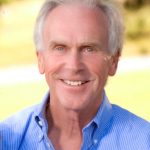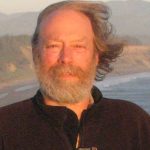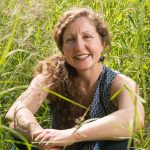Explore the Region

Breathtaking beauty and untouched serenity are only a small part of what makes the Klamath-Siskiyou region so unique.
Teeming with life, the Klamath-Siskiyou is ranked one of the most biologically diverse regions in the world. From the Pacific coast, the rain-soaked coastal redwood forests give way to the rugged Klamath Mountains, which are bordered on the east by the arid foothills of the Rogue and Shasta Valleys. Wild salmon and steelhead spawn in the pristine Wild and Scenic Rivers, while the clear, cold streams provide fresh drinking water for our local communities.
The Klamath-Siskiyou region’s dense mountain forests and beautiful rivers provide a recreational wonderland for generations of families to enjoy and pass on.
The federally-protected Wilderness Areas, National Recreation Areas, National Forests, National Parks, and Wild and Scenic Rivers ensure that this national gem will remain for our future generations to treasure.
Geology
 From north to south, four mountain ranges span the Klamath-Siskiyou region: the Siskiyous, Marbles, Trinity Alps, and Yolla Bollys. Geologists call these mountains the “Klamath Knot,” because they all have one thing in common: they are composed of a complex variety of rocks largely untouched by glaciers.
From north to south, four mountain ranges span the Klamath-Siskiyou region: the Siskiyous, Marbles, Trinity Alps, and Yolla Bollys. Geologists call these mountains the “Klamath Knot,” because they all have one thing in common: they are composed of a complex variety of rocks largely untouched by glaciers.
Geologists believe these mountains were created about 200 million years ago when the North American plate and the Pacific plate collided. The heavier Pacific plate dove (subducted) underneath the North American plate, scraping layers of the ocean floor onto the edge of the continent. The pressure from this event thrust up mountains made of the ocean floor. Over millions of years, surface sediments were transformed by heat and pressure, becoming metamorphic schist and gneiss.
Over time, these mountains eroded into rolling hills, until 3 million years ago when the great plates slipped sideways and split the ranges into large, upturned fault blocks. These became the steep, water-carved canyons we see today.
The terrain is rugged, and its abrupt changes in geology, soils, elevation, slope, aspect, and moisture are the leading reason for the region’s incredible diversity and variety.
Biodiversity
 The Klamath-Siskiyou’s world-class biological diversity makes it one of the most unique ecosystems in the world.
The Klamath-Siskiyou’s world-class biological diversity makes it one of the most unique ecosystems in the world.
The great diversity and age of the region’s underlying geology and soils, as well as its geographic location, account for the Klamath Siskiyou’s astounding biodiversity.
Positioned at the junction of the uplifted Coast Ranges, the volcanic Cascades, and Sierra Nevadas, the Klamath-Siskiyou was spared the vulcanism and glaciation that occurred around them, thus making the region a refuge for plant and animal species from all directions.
Not only is it home to 3,500 plant species, but nearly 300 of them exist nowhere else on Earth. The region also contains 36 species of conifers, more than any other temperate forest region in the world.
Forests
 Large, majestic and varied, the forests of the Klamath-Siskiyou are both awe-inspiring and biologically fascinating.
Large, majestic and varied, the forests of the Klamath-Siskiyou are both awe-inspiring and biologically fascinating.
Thirty-six conifer species exist in the Klamath-Siskiyou, more than anywhere else in North America and possibly the world. In a one-square-mile area of the Russian Wilderness alone, 17 conifer species are found – the highest diversity of conifers ever recorded at a single site.
The rain-soaked coastal redwood forests in the west contain the tallest trees on Earth, attracting tourists from all over the world.
Ancient tree species found nowhere else on Earth include the Brewer spruce and Port Orford cedar, both survivors of the ice age.
Experience the Klamath-Siskiyou and discover what makes this region a national treasure.
Watersheds
 The beautiful, healthy rivers of the Klamath-Siskiyou region bring countless benefits to the local communities.
The beautiful, healthy rivers of the Klamath-Siskiyou region bring countless benefits to the local communities.
Every year, tens of thousands of people flock to these rivers, like the Rogue, Klamath, Salmon, and Smith, to raft, fish, hike and to just enjoy their inherent beauty.
The Siskiyou Wild Rivers in the Oregon part of the Klamath-Siskiyou is home to the most iconic aquatic species in the Pacific Northwest: the Pacific Salmon. Native salmon and steelhead in the Rogue River watershed alone bring more than $1.5 billion to the local economy each year.
Whether you love to enjoy river recreation or just a nice glass of fresh drinking water, the clear cold rivers in the watersheds of the Klamath-Siskiyou are valuable and important.
Resources
- Big Wildlife
- EPIC- Environmental Protection Information Center
- Friends of Elk River
- Geos Institute
- Humboldt Baykeeper
- North Coast Environmental Center
- Kalmiopsis Audubon Society
- Klamath Forest Alliance
- Klamath Riverkeeper
- Klamath-Siskiyou Wildlands Center
- Red Buttes Wilderness Council
- Redwood Chapter of the Sierra Club
- Redwood Region Audubon Society
- Rogue Group Sierra Club
- Rogue Valley Audubon Society
- SAFE- Safe Alternatives for our Forest Environment
- Salmon River Restoration Council
- Siskiyou Audubon Society
- Siskiyou Project
- Smith River Alliance
- Soda Mountain Wilderness Council
- Southern Oregon Land Conservancy
- Trout Unlimited
- WaterWatch
Join the Cornerstone Network
Sign up with a monthly donation and become part of our Cornerstone Network. Network members recieve the messages posted here first, delivered directly to your inbox. Your ongoing support is the foundation of our work.

 Arsum is the Senior Adaptation and Coastal Resilience Specialist for the National Wildlife Federation’s Southcentral Region. In this role, she advances climate adaptation efforts, with a focus on nature-based approaches to address the impacts of climate change and extreme events across the Gulf region. She has authored and co-authored numerous publications on climate impact assessments and adaptation solutions. Additionally, she regularly participates in state-based coastal resilience and hazard mitigation planning across the Gulf, collaborating with regional and local stakeholders.
Arsum is the Senior Adaptation and Coastal Resilience Specialist for the National Wildlife Federation’s Southcentral Region. In this role, she advances climate adaptation efforts, with a focus on nature-based approaches to address the impacts of climate change and extreme events across the Gulf region. She has authored and co-authored numerous publications on climate impact assessments and adaptation solutions. Additionally, she regularly participates in state-based coastal resilience and hazard mitigation planning across the Gulf, collaborating with regional and local stakeholders. Frank is the former President of the Reinsurance Association of America. Frank currently serves on the Advisory Board of the OECD’s International Network for the Financial Management of Large-Scale Disasters, the RAND Center on Catastrophic Risk Management and Compensation, and the University of Cincinnati’s Carl H. Lindner III Center for Insurance and Risk Management Advisory Board.
Frank is the former President of the Reinsurance Association of America. Frank currently serves on the Advisory Board of the OECD’s International Network for the Financial Management of Large-Scale Disasters, the RAND Center on Catastrophic Risk Management and Compensation, and the University of Cincinnati’s Carl H. Lindner III Center for Insurance and Risk Management Advisory Board. Jim is a multilingual world traveler. Based in Bavaria during the 1970s, Jim spent most of this period in India, Afghanistan and Nepal, where he founded and operated a charitable medical clinic serving Tibetan Refugees. He settled in Oregon in 1983 on a forested ranch in the Umpqua National Forest.
Jim is a multilingual world traveler. Based in Bavaria during the 1970s, Jim spent most of this period in India, Afghanistan and Nepal, where he founded and operated a charitable medical clinic serving Tibetan Refugees. He settled in Oregon in 1983 on a forested ranch in the Umpqua National Forest. Dr. Micah Hahn is an Associate Professor of Environmental Health in the Institute for Circumpolar Health Studies at the University of Alaska-Anchorage. She received her joint PhD in Epidemiology / Environment and Resources from the University of Wisconsin-Madison and her MPH in Global Environmental Health from Emory University. Subsequently, she was a postdoctoral fellow for the CDC Climate and Health Program, and in this position worked collaboratively with the CDC Division of Vector-borne Diseases and the National Center for Atmospheric Research. Her research focuses on understanding the health impacts of climate change and working with communities to develop locally-relevant adaptation and resilience-building strategies. Dr. Hahn is also on the Management Team of the Alaska Climate Adaptation Science Center.
Dr. Micah Hahn is an Associate Professor of Environmental Health in the Institute for Circumpolar Health Studies at the University of Alaska-Anchorage. She received her joint PhD in Epidemiology / Environment and Resources from the University of Wisconsin-Madison and her MPH in Global Environmental Health from Emory University. Subsequently, she was a postdoctoral fellow for the CDC Climate and Health Program, and in this position worked collaboratively with the CDC Division of Vector-borne Diseases and the National Center for Atmospheric Research. Her research focuses on understanding the health impacts of climate change and working with communities to develop locally-relevant adaptation and resilience-building strategies. Dr. Hahn is also on the Management Team of the Alaska Climate Adaptation Science Center. Michael is a former Founding Principal of Resilient Cities Catalyst, a global non-profit helping cities and their partners tackle their toughest challenges. He is currently the Executive Director of Climate Resilience Academy at the University of Miami.
Michael is a former Founding Principal of Resilient Cities Catalyst, a global non-profit helping cities and their partners tackle their toughest challenges. He is currently the Executive Director of Climate Resilience Academy at the University of Miami. Dr. Quintus Jett is a consultant, educator, and strategist for public causes. He has a doctorate in Organizations & Management from Stanford University, and a two-decade faculty career which spans schools, departments, and programs of business, engineering, liberal studies, divinity, and public and nonprofit management. Following Hurricane Katrina in 2005, Dr. Jett launched a volunteer project in New Orleans, which enlisted residents, students from over a dozen colleges and universities, and hundreds of others to field map the city’s Gentilly district, Lower Ninth Ward, and New Orleans East. Dr. Jett is an innovator in higher education, bridging the divide between academic research and the other priorities of the modern university, including student access and diversity, community engagement, and providing foundations for life-long learning in today’s rapidly changing world.
Dr. Quintus Jett is a consultant, educator, and strategist for public causes. He has a doctorate in Organizations & Management from Stanford University, and a two-decade faculty career which spans schools, departments, and programs of business, engineering, liberal studies, divinity, and public and nonprofit management. Following Hurricane Katrina in 2005, Dr. Jett launched a volunteer project in New Orleans, which enlisted residents, students from over a dozen colleges and universities, and hundreds of others to field map the city’s Gentilly district, Lower Ninth Ward, and New Orleans East. Dr. Jett is an innovator in higher education, bridging the divide between academic research and the other priorities of the modern university, including student access and diversity, community engagement, and providing foundations for life-long learning in today’s rapidly changing world. Scott is Monfort Professor of Atmospheric Science at Colorado State University. He has written about 100 publications in the peer-reviewed climate literature, is a former editor of the Journal of Climate, and served for five years as founding Science Chair of the North American Carbon Program.
Scott is Monfort Professor of Atmospheric Science at Colorado State University. He has written about 100 publications in the peer-reviewed climate literature, is a former editor of the Journal of Climate, and served for five years as founding Science Chair of the North American Carbon Program. Linda has many years of experience in disaster preparedness and resilience. She has been an elected official on the Linn County Iowa Board of Supervisors, Chair of the Metropolitan Planning Organization, the East Central Iowa Council of Governments, the statewide Mental Health Developmental Disability and the Linn County Board of Health. Langston is a former president of the National Association of Counties (2013-2014).
Linda has many years of experience in disaster preparedness and resilience. She has been an elected official on the Linn County Iowa Board of Supervisors, Chair of the Metropolitan Planning Organization, the East Central Iowa Council of Governments, the statewide Mental Health Developmental Disability and the Linn County Board of Health. Langston is a former president of the National Association of Counties (2013-2014). Ken works with families and organizations as a mediator, organizational consultant, trainer and facilitator. Along with his passion for helping people prepare for and reduce climate change, Ken also volunteers as a mediator through Mediation Works and is passionate about supporting youth through mentoring with Boys to Men of Southern Oregon.
Ken works with families and organizations as a mediator, organizational consultant, trainer and facilitator. Along with his passion for helping people prepare for and reduce climate change, Ken also volunteers as a mediator through Mediation Works and is passionate about supporting youth through mentoring with Boys to Men of Southern Oregon. Matthew is a retired high school teacher who was once honored as Oregon High School Social Studies Teacher of the Year. Before his teaching career he was in the restaurant business in Portland. He is also a lawyer who has been a member of the Oregon State Bar Association since 1980.
Matthew is a retired high school teacher who was once honored as Oregon High School Social Studies Teacher of the Year. Before his teaching career he was in the restaurant business in Portland. He is also a lawyer who has been a member of the Oregon State Bar Association since 1980. Andrea is the Resilience Policy Advisor for the North Carolina Office of Recovery and Resiliency. She works across state agencies and with local governments to increase the state’s resilience to the impacts of climate change.
Andrea is the Resilience Policy Advisor for the North Carolina Office of Recovery and Resiliency. She works across state agencies and with local governments to increase the state’s resilience to the impacts of climate change.